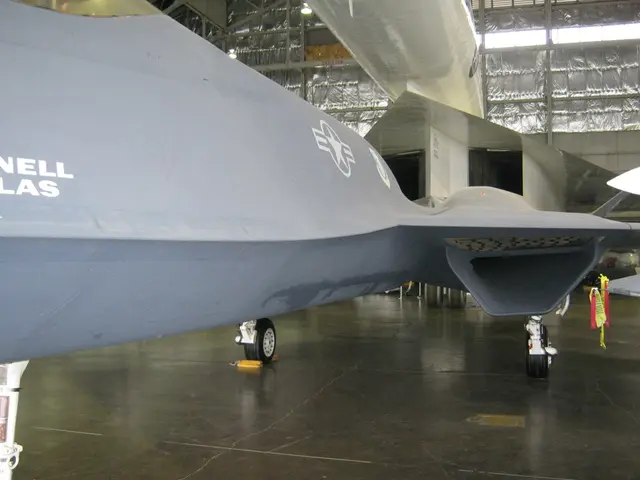Navigating Nighttime Visual Approaches Safely: A Guide for Flight Operations
Flying visual approaches at night can be challenging, but with the right practices, pilots can minimize the risks of Controlled Flight Into Terrain (CFIT) and other hazards. Here are some key practices to follow:
Confirm Airport Lighting Visibility
Before starting your descent, ensure that the airport lighting is clearly visible and you remain within the visual glide slope indicator service volume. If at any point the airport lights are lost or obscured, initiate a go-around immediately to avoid terrain or obstacles in your flight path.
Maintain a Stable Approach
Maintain a stable approach, stabilized by using instrument cross-checks and proper configuration, well before final descent. Even on visual approaches at night, keep referencing your instruments to ensure correct speed, descent rate, and flight path.
Pre-brief Your Go-around Scenario
Pre-brief your go-around scenario based on known terrain, weather, potential traffic, and alternative runways. This pre-briefing can help you make quick decisions in case visual references become unreliable.
Be Aware of Limited Visual Cues
Remember that visual cues at night are limited, and depth perception is degraded, increasing the risk of misjudging distance and altitude. Use available aids such as visual approach slope indicators and minimum safe altitudes (MSA) to maintain clearance from terrain.
Maintain Minimum Safe Altitude Clearance
Maintain minimum safe altitude clearance, often 500 to 1,000 feet above highest terrain or obstacles along your route, to mitigate the terrain collision risk that is heightened at night.
Develop Instrument Flying Skills
Develop proficiency with instrument flying skills and consider backing up visual approaches with instrument approach procedures when possible. IFR training on stabilized approaches and go-around decision-making helps improve safety on night visual approaches.
Recognize Spatial Disorientation and Night Illusions
Recognize that spatial disorientation and night illusions are common hazards during night approaches; thorough preflight planning and situational awareness help mitigate these risks.
In short, flying a visual approach at night requires cautious preparation, strict adherence to instrument cross-checking, use of lighting and visual aids, and readiness to go around if visual references become unreliable. This deliberate, disciplined approach minimizes CFIT risk and other hazards inherent to night visual approaches.
It's essential to pre-brief go-around scenarios based on terrain, available runways, weather, and nearby traffic for visual approaches. Pilots should also be aware of potential mistakes, such as mistaking brightly lit highways for runway or approach lighting systems. To avoid such mistakes, pilots should zoom in on their GPS or load an approach to verify they are lined up with the runway.
Darkness increases the risk of CFIT on visual approaches because it makes spotting terrain and obstacles difficult. Changing the runway lighting intensity and looking for the airport's rotating beacon can also help pilots verify they are pointed at the runway.
It's important to note that there are no published missed approach procedures for visual approaches at non-towered airports. Visual approaches can be challenging in the IFR world, even when the weather is good and the field is in sight. If contact with airport lights is lost during a night visual approach, a go-around is necessary.
A precision approach provides a constant glide path all the way to the pavement, making the approach more stable and safe. Visual approaches often involve being several miles from the airport and being high above the runway. Following a published instrument approach is one of the easiest ways to ensure alignment with the correct runway during a night visual approach.
PAPI and VASI systems are the most popular visual glideslope systems. When backed up with a precision approach for a visual, the aircraft is lined up with the correct runway at the correct airport. Almost all lighted runways have a glideslope system, whether visual, electronic, or both. At tower-controlled airports, the tower provides missed approach instructions.
The "black hole effect" can occur when approaching an airport with few ground features and lights, causing pilots to fly lower approaches and potentially crash short of the runway. For PAPIs, two red and two white lights indicate correct alignment. For VASIs, red over white indicates correct alignment. A published instrument approach gives confidence that the aircraft is not getting too low, especially when miles from the runway.
Visual approaches are a leading cause of CFIT accidents and flight crews mistakenly landing at the wrong airport. By following these guidelines, pilots can increase their safety and reduce the risks associated with night visual approaches.
- To minimize risks during night visual approaches, pilots should confirm airport lighting visibility and maintain a stable approach, referencing instruments for speed, descent rate, and flight path.
- In cases where airport lights are lost or obscured, pilots should initiate a go-around immediately to avoid potential terrain or obstacles.
- Pre-briefing go-around scenarios based on known terrain, weather, potential traffic, and alternative runways can help make quick decisions when visual references become unreliable.
- Limited visual cues at night increase the risk of misjudging distance and altitude, so pilots should use available aids such as visual approach slope indicators and minimum safe altitudes to maintain clearance from terrain.
- To mitigate the terrain collision risk that is heightened at night, pilots should maintain minimum safe altitude clearance and develop proficiency in instrument flying skills.
- Recognizing spatial disorientation and night illusions as common hazards during night approaches, along with thorough preflight planning and situational awareness, can help pilots combat these risks.
- Flying a visual approach at night requires cautious preparation, strict adherence to instrument cross-checking, use of lighting and visual aids, and readiness to go around if visual references become unreliable.
- Following a published instrument approach is one of the easiest ways to ensure alignment with the correct runway during a night visual approach, thus reducing the risks associated with night visual approaches.








